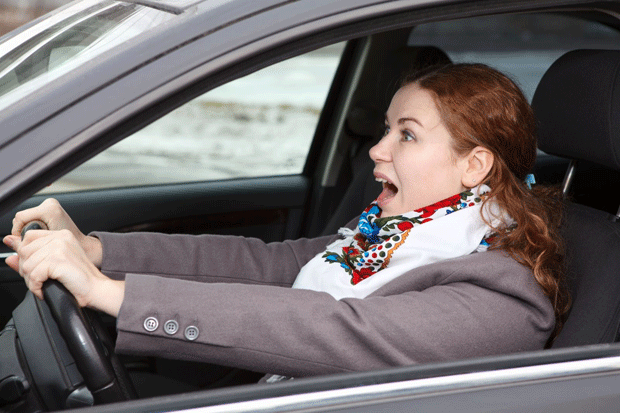Emergency Stop Guide / Controlled Stop
It is very important that you are able to stop your vehicle quickly, safely and under control in the event of an emergency. Of course by reading the road well ahead and driving at a safe and sensible speed, we can reduce the likely hood of performing an emergency stop. But as we all know emergencies do and will happen.

Stopping Distances
Remember at 30mph it can take up to 75 feet (23 meters) to stop the car, this is in dry conditions. It can take 4 times longer in the wet and up to 10 times longer on ice.
The emergency stop may be required to be carried out on your driving test, it does not form part of every driving test but can be expected in 1 in 3 driving tests. It is classed as an extra exercise and you will still be asked to carry out 1 driving manoeuvre as well.
Stop Quickly & Safely
Long gone are the days when the examiner would slam his clipboard on the dashboard when he wants you to stop. It’s a little bit more sedate these days, however the examiner will expect you to stop the car safely and under full control.
The examiner will pull you over at the side of the road and explain to you that somewhere down the road he will raise his right hand and shout stop. At this point the examiner will expect you to react quickly to his signal and bring the car to a stop quickly and safely.
You do not need to check your mirrors after the examiner shouts stop, he will look behind before shouting. In a real emergency you will not have time to check your mirrors but your main concern should be stopping the vehicle.
How to Safely Stop the Vehicle
As soon as the examiner shouts stop you need to:
- Quickly go from the gas pedal to the brake pedal.
- Keep both hands on the wheel until you have come to a safe stop.
- Brake hard and progressively (imagine you are standing on an orange, you want to squeeze the juice out but not squash it).
- Put the Clutch down just before the car stops.
- Feet still once you stop, secure the car.
Emergency Stop Video Guide – Inside View
Emergency Stop Video Guide – Outside View
Common Faults
- Try not to put the clutch pedal down before braking as this can cause the car to speed up before slowing down.
- Don’t take your hands off the steering wheel until you have come to a stop.
- Try to complete the exercise without the ABS kicking in, if you were driving a car without ABS you could start to skid at this point.
- Don’t take your feet off the pedals until you have secured the car (handbrake and neural).
Don’t forget…
Before you move off again, make sure you have a good look around including blind spots. Don’t move off until it’s safe. You could fail your driving test if you move off without looking around.
Skidding
The main cause of skidding is driver error, excessive braking, acceleration, steering, and speed. Most new cars are now fitted with ABS which will help you control the car in a skid situation.
Any Questions?
If you have any questions regarding the emergency stop, feel free to contact us.
